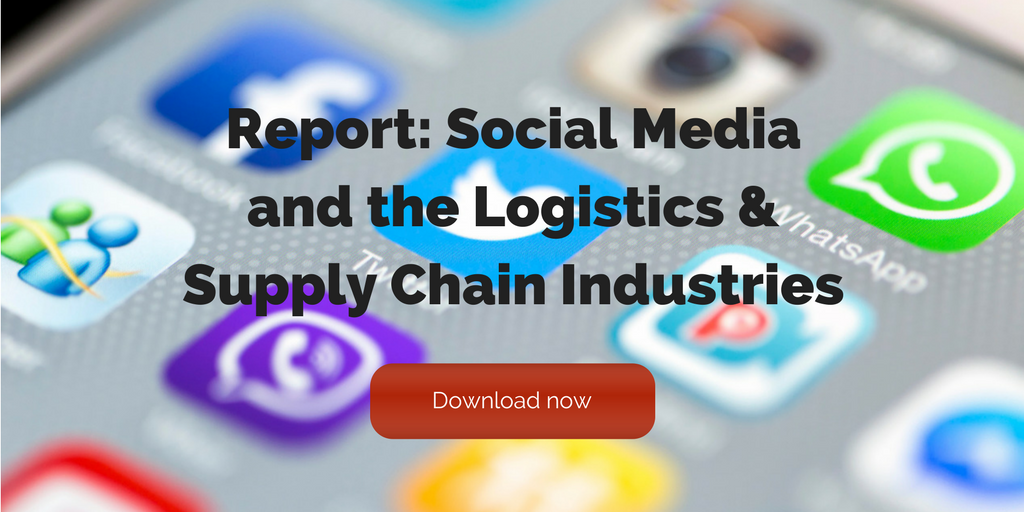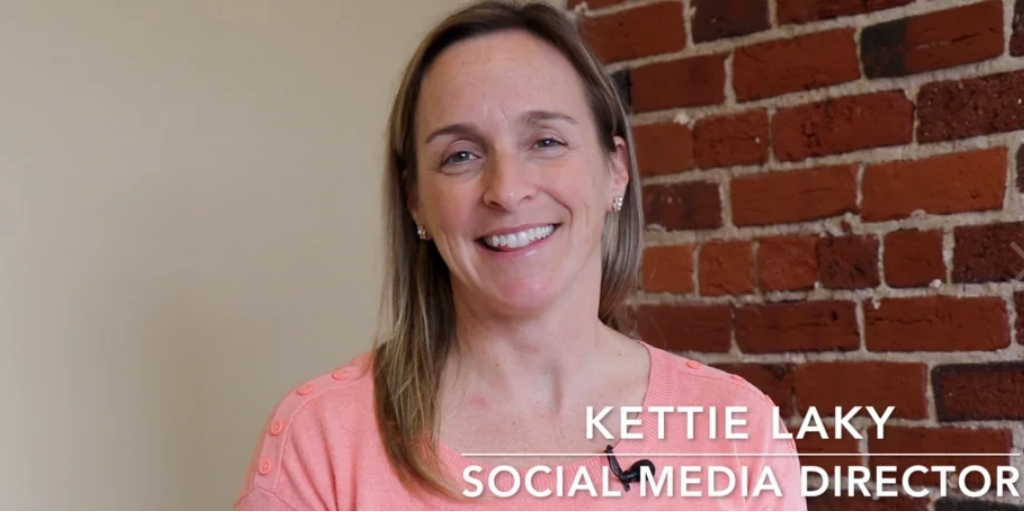
by Fronetics | Aug 27, 2019 | Blog, Content Marketing, Current Events, Marketing, Social Media
Social media growth slowed for the first time, but marketers are still set to increase budgets in 2020. Here are three reason why they’re sticking with social.
Highlights:
- Social media promotes engagement, and can be used to reinforce ads and boost their performance.
- Brands can continually test campaigns on their platform, get immediate results, and scale successful outcomes.
- As followers like posts and engage with them, they help marketers build customer profiles and increase organic reach through shares and comments.
Video transcript:
Hi, I’m Elizabeth Hines, Creative Director at Fronetics, and today’s topic is 3 reasons why digital marketers are sticking with social.
Digital marketers have been using social media to deepen customer relationships and drive measurable business value. And social media investment remains high. If fact experts predict spending on social media marketing will increase over the next five years. But social media is not delivering on the goods. In fact, social media growth slowed for the first time this year since it started.
So why are digital marketers sticking with social?
1. Engagement
Traditional marketing methods have inundated the market. Consumers are exposed to 4,000 to 10,000 ads a day, most of which flash on a screen as an inherently passive activity. Social media, however, promotes engagement, and can be used to reinforce ads and boost their performance. Consistently publishing to your social media channels results in your brand remaining top of mind when a potential buyer is looking for your product or services and gives you accessibility to engage with audiences that are interacting with your social posts.
2. Cost
Marketers’ goal is always to capture leads and connect directly with prospects. Social media is a platform that companies can control at a relatively low-cost to operate. Brands can continually test campaigns on their platform, get immediate results, and scale successful outcomes. Whether it’s to network with industry professionals, provide customer service, or influence potential customers, social media provides a free, easily accessible way to do so. And more and more customers are expecting to be able to communicate on social media.
3. Mobile
The future of customer engagement is mobile. Social media, with its visual content and short text, is ideally suited for mobile engagement. Prospects engage with social media throughout the day due to its short-form nature, making it more likely you can connect with them. As they like posts and engage with them, they help marketers build customer profiles and increase organic reach through shares and comments.
For more information, please visit our website at www.fronetics.com.
Related posts:


by Fronetics | Jul 24, 2019 | Blog, Leadership, Logistics, Supply Chain
Corporate social responsibility is no longer optional; it’s expected. Here are five trends that today’s business leaders need to be aware of.
Highlights:
- 75% of millennials expect their employers to take a stand on social issues.
- In a polarized political climate, successful corporate social responsibility requires authenticity and open dialogue.
- Companies are increasingly measuring the results of corporate social responsibility campaigns, ensuring that they align with business objectives.
Corporate social responsibility in increasingly becoming a buzzword — and a consumer expectation. Businesses are facing external and internal pressures to act in socially responsible ways, tackling issues related to sustainability, social advocacy, and more. And, corporate leaders, in response, are increasingly paying attention.
A recent study by Glassdoor found that 75% of employees between the ages of 18 and 24 expect employers to take a stand on social issues ranging from immigration and equal rights to climate change. Not only that, 84% of U.S. workers of all ages believe that companies have an important role to play in proposed legislation, regulation, and executive orders.
In 2019, donating to charities is no longer enough. Writing for Forbes, Community Health Charities President and CEO Thomas Bognanno points out that today, “corporate leaders are aligning social impact and employee engagement with business objectives.” Companies are evaluating the effects of corporate social responsibility to ensure that these efforts “demonstrate real value to the company.”
Staying abreast of trends, expectations, and issues related to corporate social responsibility is a must for today’s business leaders.
5 corporate social responsibility trends leaders should know about
1) Authenticity
Let’s start with one that’s likely here to stay. Social media has rapidly accelerated the expectation that companies should be both authentic and transparent in their digital marketing. It’s had a similar effect when it comes to corporate social responsibility.
Companies are learning to actively promote authentic social engagement, whether through encouraging internal dialogue among employees or company leaders’ sharing personal messages related to important issues. From Dan Schulman of PayPal standing up against North Carolina’s so-called “bathroom bill” to Chick-fil-A’s Dan Cathy voicing his opposition to gay marriage, corporate leaders across the political spectrum are increasingly speaking out authentically.
[bctt tweet=”Companies are learning to actively promote authentic social engagement, whether through encouraging internal dialogue among employees or company leaders’ sharing personal messages related to important issues.” username=”Fronetics”]
As Bognanno points out, however, “Aligning a corporate brand with social issues can backfire if it’s not done thoughtfully and with authenticity, so be sure to understand your brand, measure stakeholder interest, and align with issues that resonate.”
2) Dialogue
In times of deep political and social division, companies and corporate leaders are increasingly recognizing their role in fostering dialogue. In fact, one expert predicts that dialogue is replacing taking a stand when it comes to corporate social responsibility in 2019.
“Faced with the prospect of a divided government in Washington, a looming presidential election in 2020, and the fact that some companies are seeking more federal oversight of their work in areas like data security, businesses will tone down their public advocacy in favor of more dialogue on the issues,” writes leadership strategy expert Timothy J. McClimon.
Whether increased dialogue comes at the expense of advocacy or goes hand-in-hand with it, the fact is that it’s a trend to watch. Companies like Campbell’s are stepping up their efforts to engage employees in social dialogue, using platforms like Workplace by Facebook. Externally, Campbell’s UnCanned by Campbell’s campaign has promoted open conversations on “real food,” GMOs, MSG, BPA, and more.
3) Educational opportunities
Workplaces are arguably far more complex environments than they were a few decades ago. The #metoo movement, for example, has thrown glaring light on issues of sexism and sexual harassment, and companies are tackling them not only with policy, but through education to enact real and lasting changes to corporate culture.
Whether it’s internal training classes, peer-to-peer dialogues, or formal executive education classes in corporate social responsibility at programs like Harvard and Wharton, companies are encouraging personnel to educate themselves on the complex issues we face in the modern workplace.
4) Preventing or mitigating disasters
Disaster relief has been considered a primary corporate social responsibility for generations. American Express, for example, has made disaster relief grants dating back to 1872. However, as natural disasters become more and more frequent globally, companies are looking at new approaches to tackling this issue.
While companies are expected to continue their relief efforts for natural disaster victims, there’s a trend toward increasing proactivity. This means helping communities build up resiliency, as well as taking a tough look at business practices that may be leading to or worsening natural disasters.
“While most natural disasters cannot be prevented from occurring, the impact on people can be mitigated or even largely eliminated through better urban and rural planning, and more restrictions on building and development,” writes McClimon. Companies are increasingly seeing these efforts as a key aspect of their corporate social responsibility.
5) Measuring results
Corporate social responsibility is increasingly being viewed not as a nicety, but as an aspect of doing business – and that means it needs to be measured, evaluated, and adjusted accordingly. Benefits of corporate social responsibility range from increased employee satisfaction to increased creativity, and companies are looking to quantify results.
Recent campaigns from Nike and Gillette have demonstrated that a strong stand on important and controversial issues can have varying consequences for a company’s bottom line. In its essence, corporate responsibility is about serving global interests without regard for gain, but companies are increasingly recognizing that for advocacy to be effective, it needs to align with business interests.
Related posts:


by Fronetics | May 22, 2019 | Blog, Content Marketing, Logistics, Marketing, Social Media, Supply Chain
Social listening describes the process of scanning online platforms to find the sentiment around your brand. Here are 4 ways that social listening can boost SEO.
Highlights:
- Social listening describes the process of scanning social media platforms, blogs, news websites and other digital forums to find the mention of any keywords.
- Regularly monitoring the sentiment around your brand through social listening can help prevent a problem before it blows up.
- Track your organic brand mentions and use that information to create a strategy about how to grow brand awareness.
Video transcript:
This is Elizabeth Hines. I’m the Creative Director at Fronetics, and today we’re talking about four ways social listening can boost your SEO.
Social listening describes the process of scanning social media platforms, blogs, news websites and other digital forums to find the mention of any keywords. In particular the name of your company or your CEO for example, to figure out the general sentiment around your company and your people. We used to use social listening mainly for social media marketing, but it can also be a really effective search engine optimization tool if you do it properly. So here are four ways social listening can boost your SEO.
1. Learn if your backlinks are coming from spammy websites
Backlinks from spammy or untrustworthy websites can negatively impact your search ranking. So a Google executive recently noted that this is just a normal part of being on the web and really you shouldn’t worry that much about it. But the one exception would be if there’s some kind of dedicated activity from a competitor, for example, buying up a lot of links and trying to ruin your search ranking. In this instance you should consider disavowing them and using social listening to figure that out.
2. Find guest blogging opportunities
One of the greatest benefits of social media is the opportunity to network with your industry peers and social influencers. Building relationships with reputable businesses and people could be a gateway to guest blogging, which is one of the most sound and effective ways to build your reputation with search engines, not to mention the people that follow those peer sites and influencers.
3. Monitor your brands reputation
Mistakes happen and even companies with the best intentions will sometimes suffer from a social media crisis. So regularly monitoring the sentiment around your brand through social listening can help prevent a problem before it blows up, goes viral or at least is big enough for Google’s algorithm to down rank you for providing a poor user experience.
4. Grow brand mentions
Now a lot of people will tell you to use social listening to find linkless backlinks, which are websites that mention your content but don’t provide a hyperlink to your site. Then you should reach out to those people and see if they’ll add that link in. But in my opinion, this is an enormous waste of time. We’re seeing that linkless backlinks are becoming equally as important as regular backlinks for search engine optimization. So instead, I encourage you to use that time and energy to track your organic brand mentions and use that information to create a strategy about how to grow more. For example did you say something on Reddit that got lots of attention? Well, you should do more of that.
For more tips like these, check out our blog at fronetics.com.
Related posts:


by Elizabeth Hines | Nov 21, 2018 | Blog, Content Marketing, Logistics, Marketing, Social Media, Supply Chain
With a growing shift toward social messaging platforms, your business needs to find a way to incorporate these apps into your content marketing strategy.
Feel like giving yourself a pat on the back for finally getting a handle on how to effectively use social media networks like Facebook, Instagram, Google+ and Twitter in supply chain marketing? Well, you might not want to celebrate just yet.
In the constantly changing world of online connection, social messaging apps are the new social media. The top four social messaging platforms have overtaken the top four social media networks in terms of monthly active users.
The increasing popularity of social messaging platforms means your business needs to consider how to incorporate social messaging apps into your marketing strategy if you want to continue to best meet your costumers.
Here’s what supply chain businesses need to know about social messaging apps — and why to use them in supply chain management.
What’s a social messaging platform?
Social messaging platforms are exactly as they sound. They are applications that allow people to easily and quickly connect with friends, family, and businesses for personal and professional conversations. They are basically email’s hip, smart, stylish grandchild. Sending text, photos, multimedia files, and even making voice calls are all available options.
Let’s take a closer look at the top four social messaging apps to gain a better sense of what they can do.
- WhatsApp. The enormously popular WhatsApp, owned by Facebook, is the most used social messaging app in the world with more than 1.5 billion users. Easy to understand and designed for smartphones and tablets, users can send text messages, photos, voice recordings and videos and even make voice calls over the internet. And guess what? It’s all free. In addition, WhatsApp lets users set a status for their contacts to see without having to message everyone, use the map function to communicate location info with someone, and share files from a phone or computer.
- Facebook Messenger. Facebook has its own messaging app too, and it’s just behind WhatsApp at 1.3 billion users. This social messaging app builds on Facebook’s user network but the message functionality was separated from the main social networking app a few years ago. Users can send messages and exchange photos, videos, stickers, and audio files, and they can react to other users’ messages too. You can also make free voice and video calls through the app.
- WeChat. With nearly 700 million users, WeChat dominates in China and is making a serious push for global reach. WeChat provides users with free mobile instant messaging, video and voice calls, group chat, and multimedia messaging with images, video, audio, stickers, and more.
- Viber. Viber is another free messaging app that works between phones, tablets, and computers. It currently has 400 million users. Users can send texts, stickers and emoticons, photos, voice and video messages. Viber also has a feature called Communities, which are public chat channels where the user can like and reply to messages in group conversations. It also has a built-in QR code scanner and, like WhatsApp, the ability to share your GPS location in conversations.
Why move to social messaging platforms?
If you’re questioning why to move toward one (or more!) of these four social messaging apps, here’s the short answer: because your customers are.
[bctt tweet=”If you’re questioning why to move towards a social messaging app the answer is that supply chain businesses can use these platforms to deliver content, engage with customers one-on-one, and offer superior personalized customer service.” username=”Fronetics”]
The longer answer is that supply chain businesses can use these platforms to deliver content, engage with customers one-on-one, and offer superior personalized customer service, all of which result in high-quality relationships and leads. And with the successful rise of chatbots in supply chain marketing, this kind of interaction is more feasible than it may initially sound.
If you need more reasons, don’t just take my word for it. Consider these 10 graphs that show why your business should gravitate toward increasing your social messaging presence.
Social messaging apps for the supply chain
So, which social messaging app is best for the supply chain? There’s no one-size-fits-all answer here. These are the top 4 platforms where your customers and potential customers are spending time, so this is where you should meet them.
But we all know that “doing it all” isn’t always feasible. So, in order to get the most from your time (and budget!), make sure to take the time to choose the best social messaging app for your marketing needs.
Ask these important questions:
- Who is my target audience?
- How will the app add value to my target audiences?
- How do I want to deliver my content?
- Do I want to use more than one app?
- How frequently will I be marketing on the app?
These questions can help you find the social messaging apps that will work best for your marketing campaign and start connecting with customers in a more personalized way.
With the shift toward messaging apps, your business needs to find a way to do the same. But however you plan to incorporate a social messaging app, here’s a final word of caution: you aren’t a friend, and you aren’t family. Be engaging, be helpful, be available. Just don’t be intrusive. The 2018 Sprout Social Index shows that people are still using social media primarily for connecting with friends and family. As businesses consider how to use messaging apps to deliver content and engage with leads, it is very thin line between getting into your costumers’ hearts or getting under their skin.
This post originally appeared on EBN Online.
Related posts:


by Fronetics | Nov 12, 2018 | Blog, Content Marketing, Logistics, Marketing, Social Media, Supply Chain
Social platforms create an opportunity to connect with prospects but only if your efforts align with customer preferences. Here’s how brands can focus on creating content that customers actually want.
In 2018 social media platforms have made a concerted effort to keep their platforms, well, social. User experience is the top priority, and many brands and businesses feel like they’ve been pushed to the back burner.
Businesses aiming to increase brand awareness must think long-term when it comes to social media. Social media marketers need to engage with users, not simply disrupt the user’s experience. This means that content shared by a brand needs to be relevant, useful, and let’s face it, visually engaging.
The overlap between brands and users
In the 2018 Social Sprout Index, researchers found that 61% of marketers create posts that teach readers something. But that’s not all, 59% of consumers reported wanting to read posts that teach something. The connection is obvious.
[bctt tweet=”In the 2018 Social Sprout Index, researchers found that 61% of marketers create posts that teach readers something. But that’s not all, 59% of consumers reported wanting to read posts that teach something. The connection is obvious.” username=”Fronetics”]
Businesses looking to increase user engagement on social platforms need to focus on providing users with what they want. Users want you to teach them. So, showcase why your brand is a leader in your industry or highlight how your products or services can be the solution to a problem.
Most social media users are still using platforms to connect with friends and family, so it’s imperative for businesses to focus on authentic engagement. This can only be accomplished by connecting readers to useful and informative information.
“The most enlightened social marketing strategy integrates awareness and consideration stage content — opening the door with entertainment and inspiration, then carrying audiences across the threshold with education, information about new product offerings and discounts and sales.” Social Sprout Index 2018
And while 80% of marketers report increasing brand awareness as their primary social media goal, it’s not always easy to know how to get started creating relevant content that will resonate with users. Here is Kettie Laky, Social Media Director, to explain how businesses can be helpful to users on social platforms.
Video: How businesses can be helpful on social platforms
Takeaway: Focus on what’s important
It’s time for marketers to stop wasting time and resources on content that doesn’t resonate with users. Aligning priorities between what users want and what marketers are producing is key to creating long-lasting relationships with prospects. Brands who are actually helpful, not intrusive, will reap the benefits of their hard work.
Related posts:








